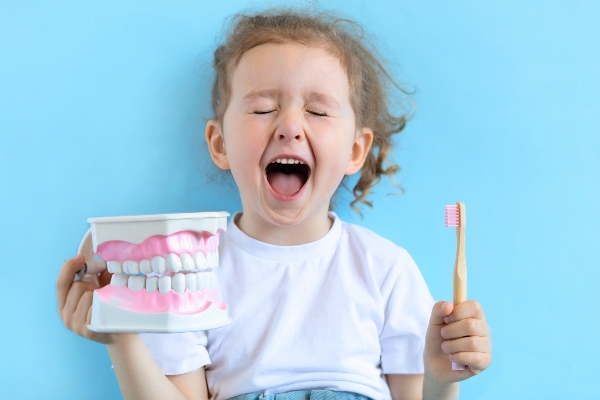How Pediatric Dentistry Can Help Prevent Oral Disease and Decay
 Aiming to get preventive pediatric dentistry treatments can improve your child’s oral health. Natural teeth develop as the child does. Both baby and adult teeth help properly develop speech. These teeth also aid in the proper absorption of nutrients. That is why caring for them is necessary. Here are the details if you want to know how preventive pediatric dentistry can protect your child’s natural teeth.
Aiming to get preventive pediatric dentistry treatments can improve your child’s oral health. Natural teeth develop as the child does. Both baby and adult teeth help properly develop speech. These teeth also aid in the proper absorption of nutrients. That is why caring for them is necessary. Here are the details if you want to know how preventive pediatric dentistry can protect your child’s natural teeth.
Balanced nutrition
Preventive pediatric dentistry includes being mindful of the foods and drinks a child consumes. Kids love processed snacks, meals, and beverages. Unfortunately, these products are full of sugars and starches that harm teeth. Choosing the right foods can reduce the child’s risk for infection. Below are some of the foods a child should eat to maintain healthy natural teeth:
- Phosphorous-rich foods can provide the foundation for enamel. These foods can help remineralize the teeth, strengthening and protecting them against bacterial infection.
- Calcium-rich foods can benefit the bones and teeth. This element enhances the enamel. It also protects this layer from decay and erosion.
- Vitamin C-rich foods can strengthen the blood vessels that supply the gums and teeth. It also reduces inflammation in the gums.
- Fiber-rich foods like fresh fruits and vegetables can scrub the enamel. These foods can remove food particles and plaque. Chewing on them can trigger saliva production, which neutralizes bacterial acids.
- Probiotic-rich foods can increase the number of good bacteria in the mouth. This increases the number of soldiers that fight plaque and tartar. Good sources of probiotics are kombucha and yogurt.
- Antioxidant-rich foods can fight bad bacteria in the mouth. In addition, these foods can help protect the gums from disease. They can also protect the cells of teeth against the damaging effects of free radicals.
Good oral hygiene
Preventive pediatric dentistry needs to be paired with good oral hygiene to become successful. Parents must teach the proper techniques for brushing and flossing at home. Brushing must last for two minutes and must happen two times a day. Flossing must take place before bedtime. Using fluoride mouthwash can strengthen the enamel against bacterial damage. Parents can set an example by joining their children in performing dental care practices.
Children should be encouraged to drink more water. This is an effective form of preventive pediatric dentistry. Water triggers the production of more saliva, which buffers the bacterial acids in the mouth. This can reduce the child’s risk for dental decay and infection.
Regular dental visits
This is an important part of preventive pediatric dentistry. The dentist can assess the patient’s gums and teeth for any signs of infection or damage. Performing a dental exam and ordering dental X-rays can help the dentist spot underlying problems. Early detection results in earlier treatment or correction.
If the child needs more elaborate pediatric dentistry treatments, the dentist will discuss this with the parent and young patient. The treatment plan will depend on the patient’s needs. Considering the child’s preferences will also be part of the process. The treatments will be in a relaxing setting to keep the young patient calm.
Preventive pediatric dentistry care can protect your child’s natural teeth
Children need help when performing proper dental hygiene practices. Parents can brush and floss their child’s teeth at first. Then, they can move on to supervising their child’s efforts. Working with the dentist during preventive pediatric dental care can help protect and preserve your child’s natural teeth as they grow up.
Request an appointment or call Grand Parkway Pediatric Dental at 832-579-0960 for an appointment in our Richmond office.
Recent Posts
Visiting a pediatric dentistry office with your child ensures his or her future relationship with oral hygiene and dentists, in general. Whenever your child suffers from oral injuries, consider making an appointment with your pediatric dentist to uncover any underlying problems. For instance, injuries to the tongue and teeth could indicate a deeper jaw or…
Fluoridated water is part of pediatric dentistry. It is a convenient and easy way to strengthen and protect teeth at an early age. Many areas have fluoridated water, which is a definite advantage. If you want to know why a dentist will likely recommend fluoridated water, here are the details.Studies show that almost all sources…
Nutrition is an important part of pediatric dentistry. Having balanced amounts of vitamins and minerals can strengthen and protect the teeth. Proper nutrients also fuel dental function. If you want to know how important nutrition is for your child’s oral health, here are the details from a pediatric dentistry professional.Children are still developing. They need…


